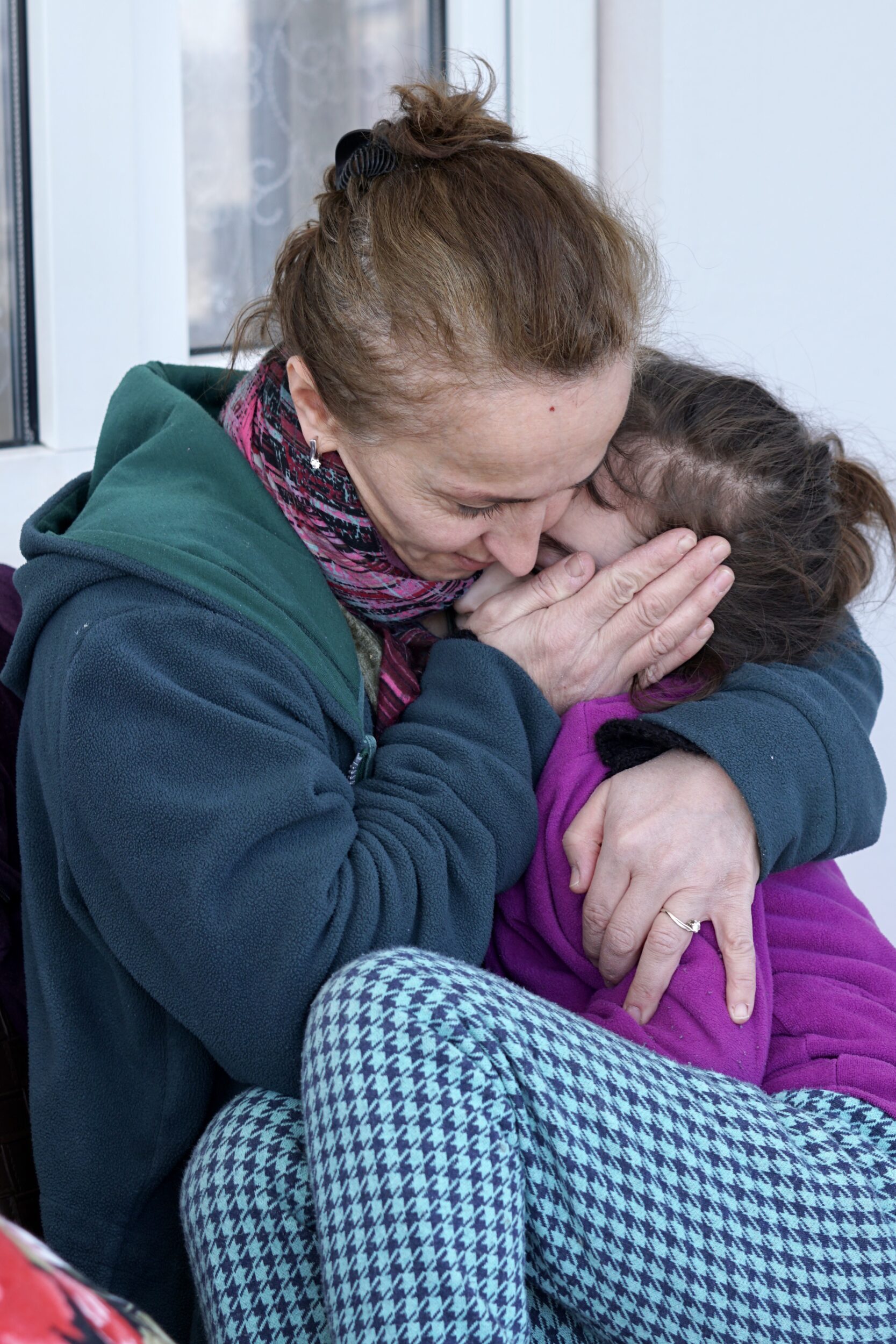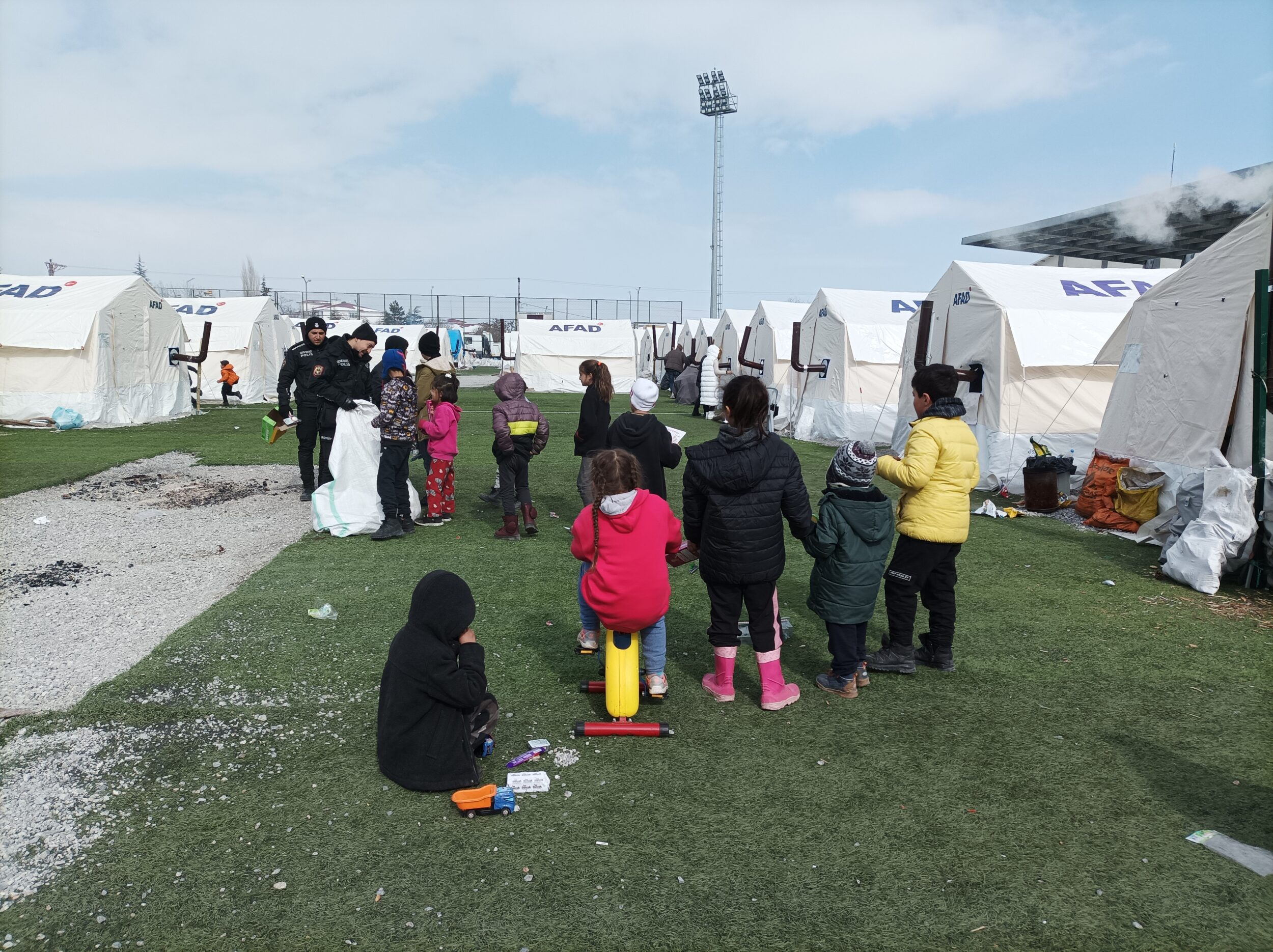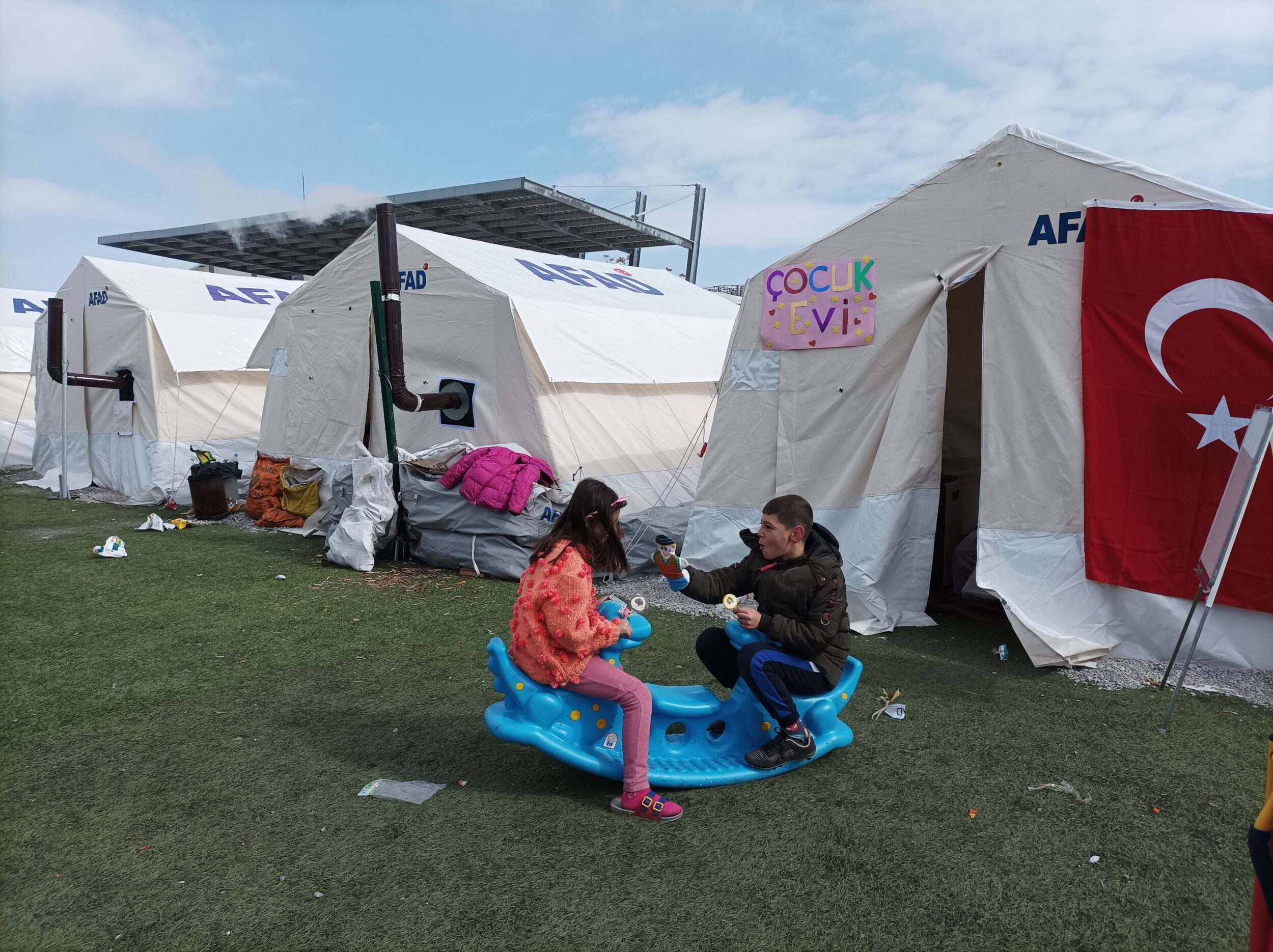A noise. Meriem Gül suddenly stops playing. Everyone in the room is silent. Concerned eyes turn to a vase of flowers, which has become an improvised seismic barometer. The flowers remain motionless. False alarm: it was a truck.

In Turkey, one month after the earthquakes, families are trying to continue living
The 7-year-old continues to enjoy himself as if nothing had happened. He is much better after the earthquake that transformed his house into an ocean liner in the storm in seconds. During the first few days, Meriem Gül could not help but cry and panic as he looked at his house, which was still standing. She and her mother then took refuge with the neighbors. Everyone lives and sleeps in the living room, the only room heated by a wood stove. In the disaster areas, natural gas heating has been stopped for safety reasons. The child and her mother will eventually leave this refuge to go into exile in a safer area.
Thousands of children living in southern Turkey and northern Syria are far less fortunate. Their houses collapsed like houses of cards. Here and there, stuffed animals and toys are found among the rubble. In the city of Antakya, red balloons have been placed among the rubble, ephemeral funeral monuments for the children killed in the disaster.
With nowhere to go, many families are left behind in the dozens of earthquake-hit Turkish cities. In the city of Afşin, located very close to the epicenter of the second earthquake on February 6, families were relocated to university residences and makeshift camps. On a sports field strewn with snowdrifts, hot soups and offerings are distributed to the victims. In the midst of the tents, the children enjoy themselves in an improvised playground. Their clear laughter brings some normalcy to the ravaged landscape.
Playrooms and psychosocial support
The policemen arrive with sacks full of toys, which they hand out smiling. Other volunteers play ball with the boys. In one corner, a tent has been decorated with colored cards: it is a play and psychosocial support room, where teams of volunteers carry out activities to heal the invisible wounds of children.

” In order for the children to forget their trauma, we have activities, games, ball games, face painting explains Zümre Devecioğlu, a resident of the city who has joined a government psychosocial support brigade. Like her, there are more than 3,700 social workers mobilized by the Turkish Family Ministry in the disaster areas of Turkey.

More than 9 million children live in earthquake-hit areas in Turkey and Syria, according to UNICEF estimates. Many of them are at risk of developing anxiety, depressive or post-traumatic disorders, warns the international organization. It’s hard for children in disaster areas to feel safe. More or less violent aftershocks have continued to shake the area since February 6, rekindling the trauma.
” For many, I think they don’t fully understand what’s going onobserves Alaaddin Şahin, a sociology student at Marmara University who is taking part in the efforts. For those who have lost family members, probably in a month or two, they’ll be asking, “Where’s my dad, my mom?” and they will have no answer. »
Urgent humanitarian needs
One month after the disaster, there is still a lot to do. Many families are still in need of emergency humanitarian assistance and still do not have access to a tent to stay. ” Sometimes two or three families have to share the cramped space of a tent observes Alexandra Saieh, head of humanitarian policy and defense of the international organization Save the Children.
” Children under the age of 11 I met told me they wish their buildings were earthquake resistant like those in Japan.says the latter from the city of Gaziantep. The rebuilding process will be long. Children are among the most vulnerable, which is why it’s important that they meet in safe places with their loved ones.. »
Epidemic risks
In Hatay province the sewage system is in ruins. There is still a lack of drinking water, portable toilets, showers and washing machines. Many cases of diarrhea have been observed. Many organizations have issued warnings about the risk of epidemics. In neighboring Syria, a resurgence in the number of cases of cholera is also being observed with concern, while the infrastructure for the distribution of drinking water is seriously damaged by years of war and recent earthquakes. Even the schooling of children in disaster areas is at risk.
In addition to the Turkish rescue teams, which have been heavily criticized for their handling of the crisis, local and international organizations are also present in southern Turkey. The NGO Save the Children notably provides material aid and psychosocial support to disaster victims. But according to Alexandra Saieh, this is far from enough given the scale of the crisis.
Importance of international solidarity
“ Rebuilding will take timecalculates the expert, who insists on the importance of international solidarity in resolving this crisis. The situation is dire and the needs are immense. We need the international community to mobilize and support families affected by earthquakes. »
Source: Madmoizelle
Mary Crossley is an author at “The Fashion Vibes”. She is a seasoned journalist who is dedicated to delivering the latest news to her readers. With a keen sense of what’s important, Mary covers a wide range of topics, from politics to lifestyle and everything in between.




